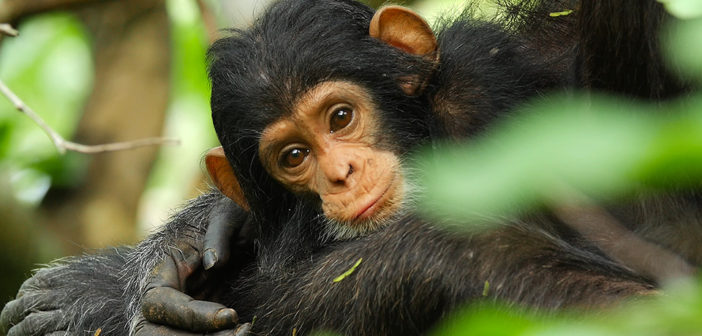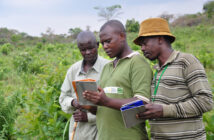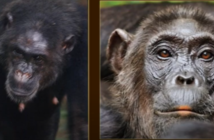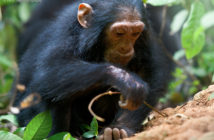For decades, chimpanzees have been put in the spotlight for their renowned intelligence and close genetics that nearly match our own (we share a common ancestor). Since it was discovered in 1960 by Dr. Jane Goodall that chimpanzees can make and use tools (read more about Dr. Goodall’s discoveries here), our understanding of them has revolutionized not only the way we study these apes, but also the way we view the human species and other non-human animals. As time goes by, deforestation, poaching, and disease threaten the lives of the endangered chimpanzees. It demands a response from us all to conserve their ecosystems and populations.
Because of these threats, it is crucial to understand chimpanzees and their behavior by using non-invasive techniques to study them. The research conducted allows us to better understand their intelligence, emotions and behavior, and what the best strategies are to protect them. Using this research, we can best save chimps, and in turn save other forms of wildlife which co-exist along side them in Africa. Let’s learn about some chimps!
Research Round-Up:
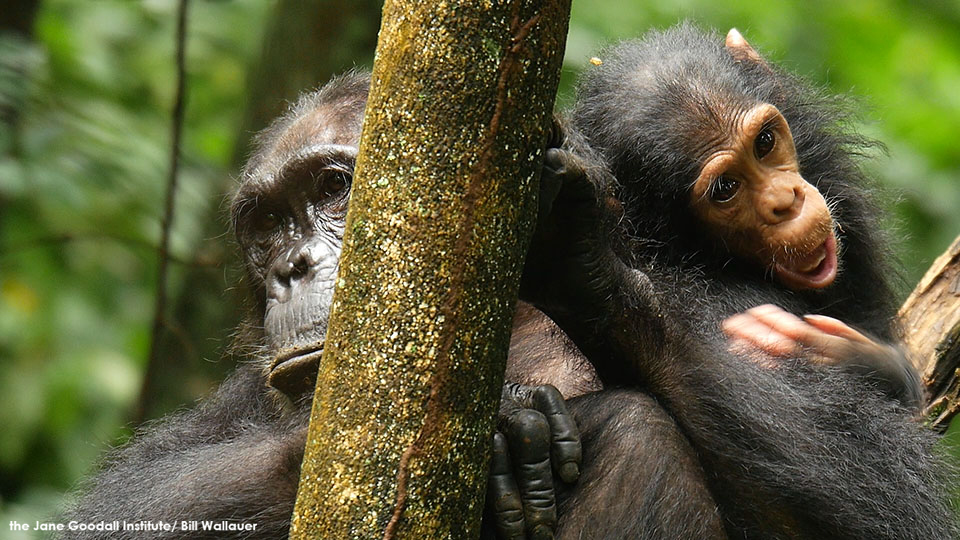 Paternal Recognition Discovered in Chimpanzees
Paternal Recognition Discovered in Chimpanzees
An intriguing discovery regarding chimpanzees is the data published by anthropologists from the George Washington University. The article released confirms that male chimpanzees do, in fact, help raise their offspring. In the past, it was widely accepted that male chimpanzees do not care for their offspring, and only desire to find mates to reproduce. However, this research completely contradicts the previous statement by providing evidence of male chimpanzees reenacting the paternal effort hypothesis.
According to the paternal effort hypothesis, “males who associate more with mothers in order to protect their offspring, [rather than]for sexual gain.” Dr. Carson Murray of George Washington University (and the Jane Goodall Institute), describes how this data will influence how we study human evolution, especially the behaviors of early fathers in the evolutionary sense.
“As anthropologists, we want to understand what patterns could have existed early in human evolution that help explain how human behavior evolved. This research suggests that males may sometimes prioritize relationships with their offspring rather than with potential mates. For a species without pair-bonds where it was assumed fathers didn’t know which infants were their own, this is an important finding.” – Dr. Carson Murray
Although this study by Dr. Murray and her team has been published, it is important to note that every chimp group may adopt different behaviors and characteristics as a result of its location and other environmental factors.
Chimpanzees Move South
For ten years, researchers and conservationists have been trying to obtain evidence that chimpanzees have begun to re-inhabit the south western corner of Nigeria. Cameras have been hidden all over the forests in this region in hopes of getting the proof they need to stop deforestation in the area. Working with other conservationists in the country, the Nigerian Conservation Foundation (NCF) has created a project to get this
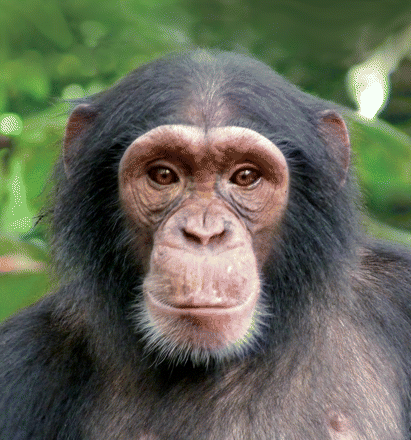
UN GRASP
evidence without interfering with the the daily lives of the wild chimpanzees.
In November of 2016, the NCF was extremely excited and proud to announce that they have discovered, through images, chimpanzees exploring the south western region of Nigeria. Specifically, the photographs place the chimpanzees in the Omo-Shasha-Oluwa Forest (OSO Forest). According to The Guardian, the cameras captured images of the rarest subspecies of chimpanzees known today. It is estimated that there are about 3,500-9,000 left in the wild, and only about 100 of them in the south west regions of Nigeria. This collection of images are vital in order to cease the deforestation that has stolen habitats from populations of chimpanzees in Nigeria, especially in the south western region.
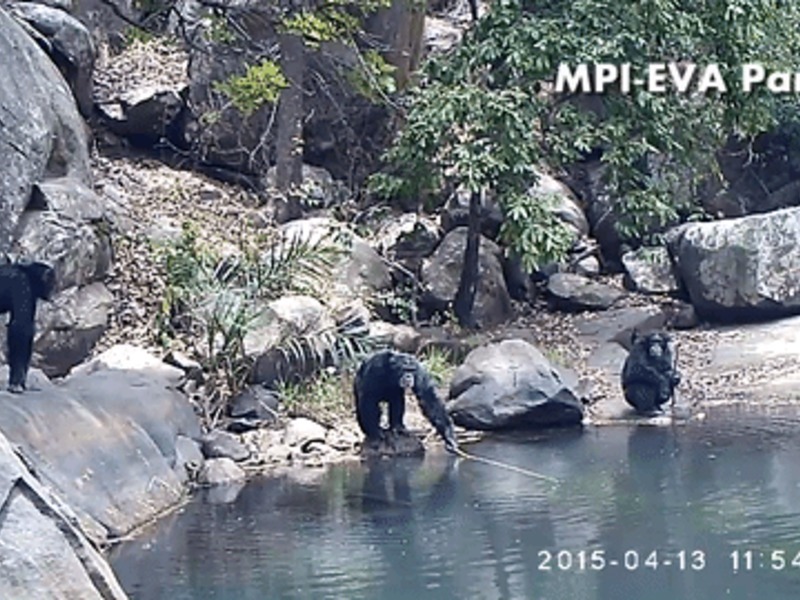 Chimpanzees Go Fishing for Algae
Chimpanzees Go Fishing for Algae
Recent findings from the Department of Primatology at the Max Planck Institute for Evolutionary Anthropology’s ‘Pan African Programme: The Cultured Chimpanzee,’ detail how chimpanzees from Bakoun, Guinea use sticks and twigs of various lengths to fish for algae at the bottom of their fresh-water sources. This phenomenon consistently occurs during the dry seasons and is recorded by PanAf cameras which are hidden discretely. The PanAf Programme focuses on examining populations of chimpanzees who are poorly studied, thus meaning that
the groups of chimps studied by this program have not been habituated to humans or their presence.
Video footage has shown that these chimps make complex fishing tools from sticks and twigs. These fishing tools vary in lengths, and fishing for algae using these tools requires a lot of skill to be successful. The recordings have showcased both male and female chimpanzees of all ages using the Bakoun fishing tools. The videos from Bakoun allow us to better understand how early humans may have evolved, especially regarding tool use.
For years chimpanzees have been studied for their fascinating minds and human-like behavior. Research has broken down barriers, thus enabling us to better understand our own ape evolution in tandem with studying these wild apes and their own behaviors and skills. To protect chimpanzees, it is vital to protect their environment and continue to encourage these incredible studies of our closest living cousins.
Learn more about JGI’s Primate Research program here.


